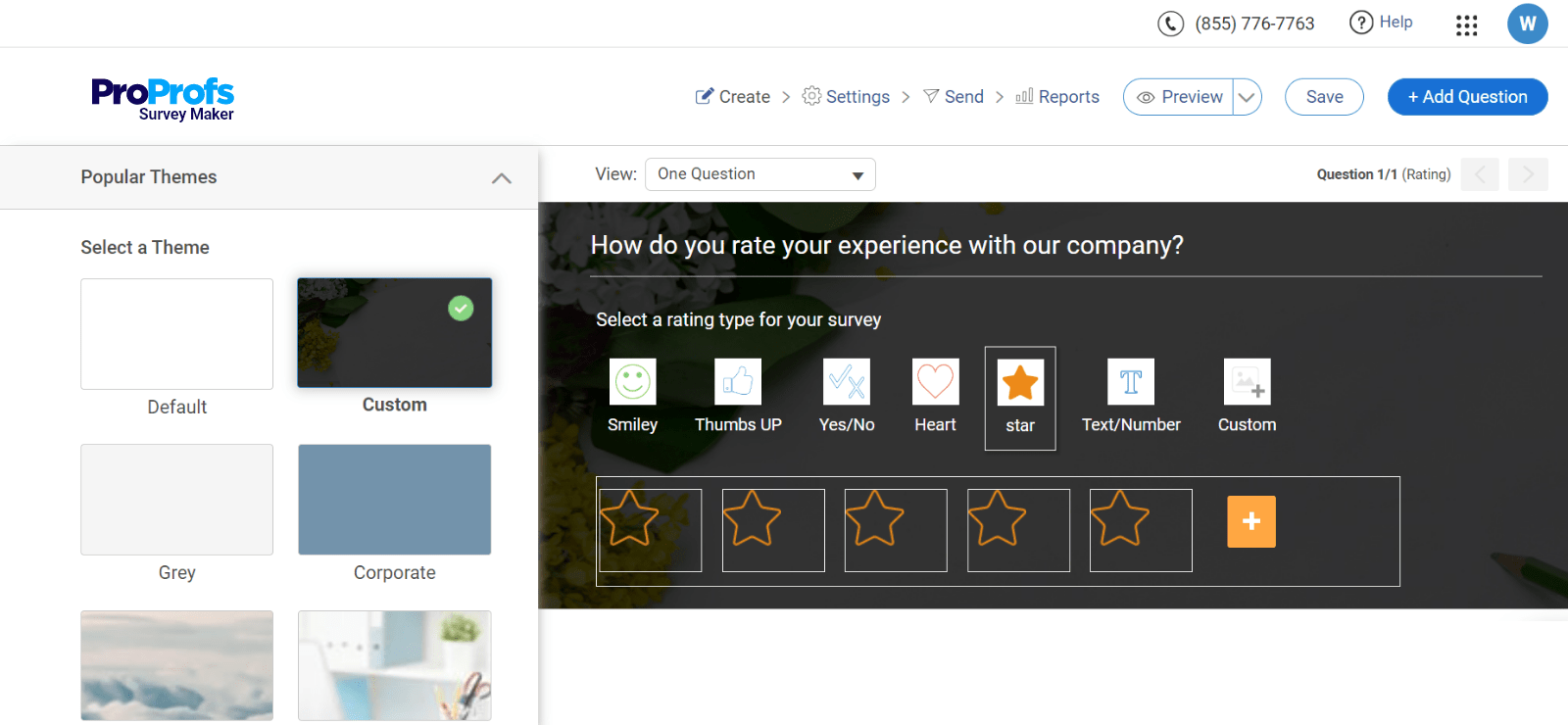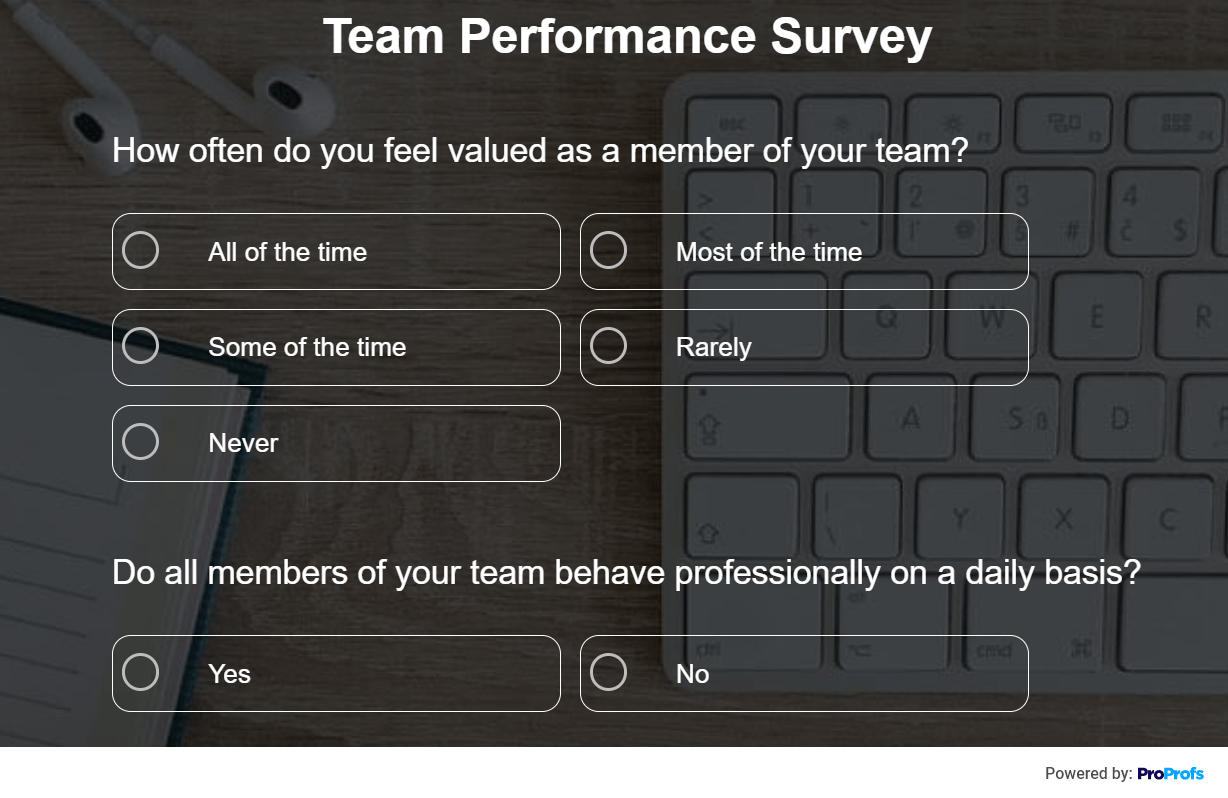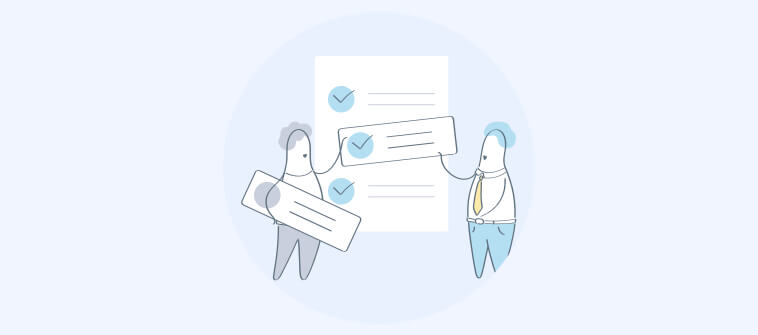
“A prudent question is one half of wisdom.” – Francis Bacon
Indeed, if you don’t ask questions, all your strategies are just arrows in the dark, and surveys are one of the best ways to collect information you wouldn’t know otherwise. They help you answer important, specific questions that can help you understand what your audience expects from you.
In today’s digital age, we no longer have to rely on cumbersome paper surveys. Online surveys have emerged as a convenient and efficient way to gather feedback and opinions.
But is it enough to be aware of this strategy? Of course not! you need to understand what makes a good survey and how you can effectively use it to uncover any insight.
In this blog, let’s try to explore some crucial aspects of creating a survey and deploying them to the best of your advantage.
What Is an Online Survey?
An online survey is a virtual questionnaire that is distributed to a targeted audience via email, social media, or website links. It typically comprises a series of questions designed to collect specific information or insights.
Respondents can access and complete the survey at their own convenience, from anywhere with an internet connection.
Source: ProProfs Survey Maker

The beauty of online surveys lies in their flexibility and accessibility. They enable researchers, businesses, and organizations to gather data efficiently, reaching a wider audience.
With just a few clicks, you can know your target audience’s thoughts and opinions on various topics, products, or services!
How to Create an Online Survey – The 8-Step Guide
Surveys are the best way to gauge a user’s beliefs and attitudes. They are relatively cheap and easy to administer. As stated, survey creation becomes easier when you have the right support.
Here, we will take ProProfs Survey Maker as our tool of choice for building a surveys because of its ease of use, customization options, a vast library of pre-installed questions, templates, free survey analysis dashboard, and multiple sharing options.
So, how do you make a survey? Follow these simple steps to create one in under 10 minutes!
Step 1: Create an Account and Hop On to the “Create Survey” Panel
Once you visit the official website of “
ProProfs Survey Maker,” you’ll be greeted with an option to create your account or log in.
Once you have completed this step, all you need to do is simply select the “create a survey tab” from the dashboard to create a quick survey.


Step 2: Use Ready-Made Templates
Creating a survey can be difficult if you do not have any prior experience.
If you are not sure about what to ask in your survey, ready-made survey templates offer a starting point that you can use as is or modify however you see fit.
Choose from the various survey templates available, including the employee engagement survey template and customer satisfaction survey template. Or, you can choose to create a survey for free from scratch.


Step 3: Choose Your Survey Questions
Surveys can be of different types: NPS surveys, scored surveys, Dichotomous (yes/no) surveys, etc. The right tools have a library of question templates, including thousands of question types like multiple choice, rating scales, and more, that make survey creation a simple task. Here are some examples of the common survey questions:
- How satisfied were you with our product?
- How likely are you to recommend this company to a friend or colleague?
- Please rate our product: Very good/ Poor/ Average/ Good/ Excellent
Click on the link to access ProProfs Survey Maker’s extensive library of 100+ templates!
Step 4: White Labeling and Customization
If you want your surveys to reflect your brand, it’s a good idea to incorporate personalized touches, such as your company’s logo, colors, and images.
Select a predefined theme or upload your custom logo, backgrounds, fonts, etc.


Step 5: Apply Skip Logic, if Needed
The success of a survey is based on how closely it is tailored to the respondent. One of the biggest pitfalls of designing a great survey is adding questions that don’t apply to them.
Advanced features like skip logic and branching help you create interactive surveys that ask only the relevant questions to the user.
To add conditional branching to your survey,
1. In the survey editor, navigate to the question/page where you want to add logic.
2. Click Advanced > Conditional Branching. A slider window will open.


3. Define a rule by adding a condition. You can add multiple conditions under one rule. You can add multiple rules as well.
4. Set up any follow-up events when the rules are met through the respondent’s answers.
Then, Go to {Select Question}
OR
Then, Redirect to {Add a URL}
OR
Then, Hide {Select Question}
Now, whenever the conditions defined in the rule are met, the Conditional Branching will work accordingly.
Step 6: Formatting Options
A well-formatted survey enhances the readability and understandability of your survey. You can achieve this by using proper spacing, page breaks, sectional breakpoints, etc., to organize your survey better.


Step 7: Gather Customer Feedback via Comments
A customer has made a choice in the survey question. But wouldn’t it be nice if you knew why? Let them tell you what they want by adding a comment section.
You can add additional comment fields after the ranking and rating surveys to get more detailed feedback. You can fetch actionable data by asking an open-response question at the end of the product, adding comments to multiple-choice questions, or to a grid of choices.
Step 8: Conduct Regular Surveys
Ensure that you conduct frequent surveys with the same questions with the same audience. This will help you to keep track of their changing sentiments. If they are satisfied with your solutions, they might turn out to be your loyal customers in the future.
Pro-tip: Here are some essential tips that can help you create the best surveys for invaluable insights.
- Limit the number of questions you ask in the survey.
- One question should target one idea.
- Questions should be simple and easy to understand.
- Target the audience and make them answer only relevant questions.
- Group similar survey questions together for more customer focus.
- Never ask a sensitive or personal question at the beginning of the survey.
- Use skip logic to eliminate the question relevant to a particular respondent.
- Prefer using words and not numbers in your answer choices.
- Avoid presenting the survey questions in a matrix to get the user’s undivided attention on a single question.
- Make sure every question is unique and holds some value.
Watch: How to Create Online Surveys Easily
Advantages of Online Surveys
With their ability to reach a wide audience, cost-effectiveness, and real-time data analysis capabilities, and online surveys offer numerous advantages over traditional survey methods.
In this section, we will explore some of the key advantages of utilizing online surveys for data collection and decision-making:
- Wider Reach: Online surveys allow you to collect feedback from a larger and more geographically dispersed audience compared to traditional methods.
- Cost-Effectiveness: With no printing or postage costs, online surveys are a cost-efficient way to gather data and insights.
- Time Efficiency: Online surveys enable quick distribution and data collection, saving time in comparison to paper-based surveys.
- Real-Time Data Analysis: The collected data can be instantly analyzed, providing immediate insights for decision-making and decision support.
- Increased Response Rates: The convenience of online surveys leads to higher response rates as respondents can complete them at their own convenience.
- Anonymity and Honesty: Respondents often feel more comfortable answering sensitive or personal questions using online surveys, leading to more honest responses.
- Flexibility in Question Types: Online surveys allow for a wide range of question formats, including multiple-choice, open-ended, and rating scales, providing flexibility in data collection.
- Customizable Design: Online surveys offer the ability to customize the appearance and branding, ensuring a consistent user experience and reinforcing your brand identity.
- Efficient Data Management: Online survey platforms provide tools for data management, such as automated data collection, validation, and reporting, simplifying the overall process.
- Integration with Data Analysis Tools: Online survey platforms often offer seamless integration with data analysis tools, enabling deeper analysis and visualization of collected data.
Types of Online Surveys
1. Customer Satisfaction Surveys
These surveys measure how satisfied your customers are with your products or services using a well-designed online questionnaire software that includes rating scales and open-ended survey questions.
2. Employee Satisfaction Survey
Employee satisfaction surveys use targeted questions to evaluate the happiness and engagement levels of your employees in their workplace, whether they are satisfied with their jobs, and to uncover any issues they might be facing!


3. Educational Surveys
These surveys aim to gain insights into the effectiveness of educational programs or courses by collecting feedback from students, parents, and teachers.


4. NPS Surveys
Net Promoter Score (NPS) surveys are used to measure customer loyalty and satisfaction by asking customers a single question: “How likely are you to recommend our product/service to others?”
The responses are then used to categorize customers as promoters, passives, or detractors, providing insights on overall customer sentiment and brand loyalty.


5. Market Research Surveys
A market research survey helps you understand the requirements of your potential customers and equips you with crucial information to tailor your marketing campaign to acquire more customers, potentially saving overhead and wasteful expenditures.
6. Brand Awareness Surveys
These surveys measure the level of awareness and recognition of your brand among your target audience, helping you refine your brand strategy and increase visibility.


7. Product Satisfaction Surveys
Product satisfaction surveys aim to understand how satisfied customers are with your specific products or services, allowing you to improve quality and address any issues.



8. Demographic Surveys
A demographic survey gives an understanding of your customer’s demographic details like location, gender, age, marital status, etc. It is a useful guide to knowing your target audience’s choices and preferences, so that you can tailor your products based on their tastes.


9. Employee Surveys
Employee surveys are tools used to gather feedback from employees to assess their satisfaction, engagement, and overall workplace experience.
Different types of employee surveys, such as employee engagement surveys, employee satisfaction surveys, diversity and inclusion surveys, etc., serve different purposes and help bring about a complete picture of all-around employee well-being.
10. Event Surveys
Event surveys are used to collect feedback from attendees after an event or conference and assess their overall satisfaction, opinions, and experience to improve future events and tailor offerings.
Insights gathered from event surveys can help event organizers make data-driven decisions, optimize resources, and create compelling experiences for attendees.


FREE. All Features. FOREVER!
Try our Forever FREE account with all premium features!
Create Engaging & Efficient Surveys with ProProfs Survey Maker
Now you know how to create surveys. However, to yield the results from surveys productively, an easy-to-use online survey software is a much-needed leverage.
Try ProProfs Survey Maker with ready-to-use survey templates and questions to help making a survey attractive and relevant to the respondent.
Among other features, the seamless survey sharing across multiple platforms after creating a survey can make this tool your obvious choice. The advanced reporting feature allows you to collect and analyze your data to reveal actionable insights and create long-term strategies for business development.
 Tips
Tips
We’d love to hear your tips & suggestions on this article!
FREE. All Features. FOREVER!
Try our Forever FREE account with all premium features!


 We'd love your feedback!
We'd love your feedback! Thanks for your feedback!
Thanks for your feedback!







